In today’s post we breakdown why your breast milk might be low, and how to increase breast milk supply with food and breastfeeding techniques from the perspective of a dietitian mama.
People who have been following my blogs know that I struggled with breast milk supply issues to feed my son E in the first few months after giving birth. You can read all about how I was able to go from supplementing and pumping legit AROUND the clock, to making enough breast milk to freeze lots of milk for babe here. When I was struggling myself, I was reading everything I could online and feeling totally overwhelmed with the tips, tricks, and techniques everyone swore worked for them. So today on the blog, I wanted to share some of the things I’ve learned along the way to increase breast milk supply.
First off, why is your breast milk supply low?

There are so many reasons why mothers struggle to produce enough milk. Some of these reasons are:
- Not feeding or pumping often enough or for long enough since breast milk production occurs on a supply and demand function
- Scheduled feedings (rather than listening to your baby’s feeding cues)
- Feed termination (stopping the feed before baby lets go)
- Poor latch due to anatomical issues like a lip or tongue tie which may be impacting milk transfer
- Poor latch due to problematic breastfeeding technique
- Prematurity
- Illness
- Taking birth control medications (specifically, estrogen-containing ones) during lactation, as they have been linked to low milk supply
But that doesn’t mean there’s nothing you can do to increase your breast milk supply!
How to Increase Breast Milk Supply: Breastfeeding Techniques

Power Pumping
If you’re struggling with latch issues, transfer issues, or are just struggling to make enough milk to satisfy your little bean, sometimes you need to “trick” your body by being a bit more aggressive on the “supply and demand” cues. Power pumping is a great way to increase the amount of breast milk supply. It tells your body, hey, I’m draining my breast often, I need to make more– kinda like if your babe went through a growth spurt and was requiring more milk. A power pumping session typically lasts about an hour so make sure you’ve got a big glass of water and some snacks before you settle in. Start off with 10 to 20 minutes of pumping, then rest for 10 minutes and hydrate. Then pump again for 10-20 minutes, then rest again for 10. Basically, do this “set” two to three times for an hour at a time, twice a day until your milk supply increases. If you want to know more about power pumping, you can read about it here.
Alternate Sides when Breastfeeding
It is so important that you feed your babe from both sides so your one boob doesn’t get used to being filled and emptied, and lets the other boob get lazy. Feed him or her on one side, give a burp, then offer the other side. Then the next time you start feeding, start with the side you finished off from last. If your babe is persistently only going for one side (like mine did), you might want to visit an osteopath to ensure there isn’t anything anatomically inhibiting them from latching on to the other side.
Skin-to-Skin
You might have heard about the importance of skin-to-skin contact when baby is born. Holding your baby against your chest is called kangaroo care. This is often recommended to help premature babies grow and thrive, but there are so many other benefits to both of you. Skin to skin helps you connect, protects against infection, promotes better sleep and reduces colicky symptoms. AND of course, it also prepares you for breastfeeding and can help with breast milk supply. This is a zero-side effect option, and a great way to bond!
Try to Relax
This might be the hardest suggestion to accomplish on this list, but it is SO important. Stress has big implications for how much breast milk you produce, and it can affect let-down (the mechanism to release milk when baby starts suckling). A study found that listening to guided relaxation or soothing music in the early stages, helped mothers increase their pumping output by 2 or 3 times, while also increasing the beneficial milk fat content. What does that mean? It means you have every right to relax. NO GUILT, LADIES! Take a warm bath, meditate, try some yoga, or take a nap. Tell your partner that they’re just going to have to take over baby duty because mama NEEDS to do this for babe.
Best Supplements to Increase Breastmilk Supply
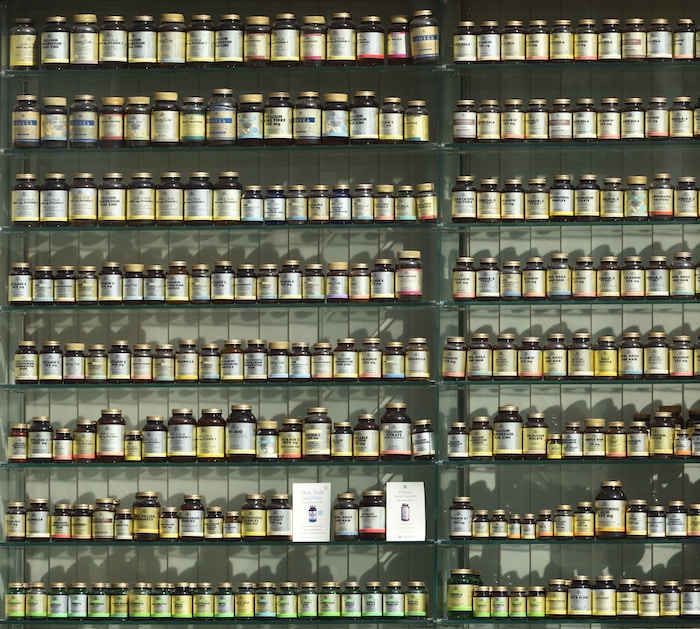
Okay so now we have some of those breastfeeding techniques down, let’s talk about my common galactagogues. Galactagogues are foods, herbs, or medications that increase or stimulate breast milk production. You hear about these on mommy blogs and Facebook groups, as well as from family, friends, and neighbors who swear it made a difference for them. According to some studies, about 15% of mothers in the United States, and 43% of mothers in Norway use some form of herbal galactagogue when they are breastfeeding. I admit, I tried EVERYTHING in those early days with E.
So do these boob foods work? Well there are several mechanisms by which it is believed that foods can increase breast milk supply, but the research isn’t all that conclusive in these studies. Fortunately, many of these options are low risk, and generally nutritious anyway, and mothers have been using them successfully for many years. It’s important to note that galactagogues don’t necessarily work on their own. You will still likely have to work on that supply/demand communication loop and ensure adequate breastfeeding techniques to see a measurable impact on breast milk supply. If they aren’t having the desired effect, or you experience any reactions, stop taking them immediately. Also, beware that these supplements and foods are not always safe during pregnancy, so check with your doctor or a specialist if you are also pregnant while nursing.
Herbal Supplements for Low Breast Milk Supply

All the common galactagogues herbs listed below are Food and Drug Administration (FDA) “Generally Recognized as Safe”. Keep in mind that while it is likely safe for consumption, dosage is not always well studied in the literature for purposes of increasing breast milk supply. Therefore, not all the herbal supplements below will indicate a dosage.
Fenugreek
Fenugreek is one of the most commonly used galactagogues for moms looking to boost their breast milk. Research shows it might have an early-on effect on lactogenesis (cellular differentiation of non-lactating to lactating mammary tissue), and prolactin levels (the hormone that helps you make more milk). Fenugreek is one of the most researched galactagogues, and it has been shown to have a moderate effect, at least within the first week of taking it. Prolonged use does not seem to make a big difference compared to mothers not taking supplements.
Dosage: The American Pregnancy Association recommends around 3.5 to 6 grams per day. This is typically between 1 to 4 capsules, 3 or 4 times daily. Do not consume more than 8 grams per day.
Potential Side Effects and Precautions for using Fenugreek:
- Sweat, urine, breast milk, and even your baby might develop a maple syrup smell
- Contractions
- Worsening asthma symptoms
- Loose stools
- Nausea
- Some mothers have felt it reduced their breast milk supply
- Hypoglycemia (reduced blood sugar levels)- use with caution if you have diabetes
- DO NOT take fenugreek if you are allergic to peanuts or soybeans
Fennel
Fennel is an herb used for cooking, but it has also been used as a treatment for things like menstrual pains, digestive problems, treating colic in infants, and increasing breast milk supply. Like fenugreek, fennel has been studied quite extensively. The exact reasons it may work are unknown, but it is potentially because it has estrogen-like properties. Two studies have shown that fennel intake increased breast milk volume and fat content, and supported baby’s weight gain. Fennel can be consumed in several ways, though commonly mothers eat the vegetable, chew the seeds or leaves, drink a tea, use fennel oil, tablets, capsules, or powders.
Dosage: There is not enough evidence to show how much fennel is needed to increase breast milk supply. Studies typically use fennel in combination with other herbs, so it is difficult to narrow down the effects of fennel on its own.
Potential Side Effects and Precautions for using Fennel:
- Diarrhea
- Toxicity, liver enlargement, and elevated liver enzymes has been reported in women taking excessive amounts of herbal tea
- Photosensitivity and allergic reactions with topical use
- Hypoglycemia
- DO NOT take fennel if allergic to carrots, celery, or plants in the Apiaceae family
Blessed Thistle
Blessed thistle is commonly included in supplements to increase breast milk supply for lactating mothers. It is considered a galactagogue but appears to work best when taking in combination with other herbs such as fenugreek. It is often taken as a tea, or in a capsule form.
Dosage: 1 to 2 teaspoons, 3 times daily in a tea is generally considered safe.
Potential Side Effects and Precautions for using Blessed Thistle:
- Diarrhea or other stomach disturbances
- Nausea or vomiting
- Increased stomach acid
- DO NOT take blessed thistle if you are allergic to ragweed, daisies, sunflowers, or plants of the Asteraceae family
Milk Thistle
Some studies have looked at extracting and utilizing the purified form of milk thistle, silymarin, to increase breast milk supply. In one study, women given silymarin were able to increase breast milk production by 64%. It is believed that it is likely the estrogen properties of this herb that help stimulate breast milk production.
Dosage: There is no conclusive effective dosage for this supplement.
Potential Side Effects and Precautions for using Milk Thistle:
- Stomach upset
- Nausea or vomiting
- Headaches
- Skin reactions
- Avoid taking if you are using Dilantin (an anti-seizure medication)
- DO NOT take if allergic to the same family of plants as blessed thistle
Brewers Yeast
Okay, anything with the word “yeast” doesn’t sound like the most appetizing thing, but brewer’s yeast is an inactive form that is a good source of protein, chromium, iron, B vitamins, and is a natural probiotic! This ingredient is typically used in the production of bread and beer. There aren’t many studies to illustrate the benefits of this used as a supplement, but lots of women have taken it and seen an increase in their breast milk supply. This may be due to being high in B-vitamins and chromium which have been shown to help improve mood- and we now know that mood does influence breast milk supply.
Dosage: Some experts indicate starting at a dosage of 3 tablespoons per day, and increasing by a half-teaspoon a day if there are no improvements. Since studies are not conclusive, it’s recommended you discontinue taking this if you do not see results or experience any side effects.
Potential Side Effects and Precautions for using Brewers Yeast:
- Gas or bloating, diarrhea, and abdominal upset
- Hypoglycemia
- Avoid if taking an antidepressant as the combination may increase blood pressure
Goat’s Rue
This is another herb that is often in a supplemental form, in combination with other galactagogues. There is quite a bit of older research done on this herb, but the majority of it is not well designed to conclusively illustrate whether goat’s rue is a true galactagogue. Due to the lack of randomization and control, it is hard to say whether there is anything more than a placebo effect- yet, some breastfeeding mothers do tout the benefits. In a survey of mothers using a goat’s rue supplement in Italy, 67% perceived an increase in milk production, and 99% identified that it was well tolerated!
Dosage: Typical dosage as per packaging is 1 capsule, 3 to 4 times per day.
Potential Side Effects and Precautions for using Goat’s Rue:
- Goat’s rue is toxic in its fresh format! Only try this supplement in a commercially prepared form such as a tea from dry leaves, or a capsule.
- Liver enlargement when taken in high quantities, and when used in combination with other galactagogues
- Hypoglycemia
- DO NOT take goat’s rue if you are allergic to peanuts, soybean, alfalfa, or fenugreek
Shatavari
Shatavari is a wild asparagus that has been widely used in India as an Ayurvedic medicine. Many studies show at least a mild increase in milk supply, and a systematic review by Mortel and Mehta found an increase in prolactin levels, and increased growth of mammary glands and breast tissue.
Dosage: There is no conclusive effective dosage for this supplement.
Potential Side Effects and Precautions for using Shatavari:
- Frequent urination- Shatavari is used as a diuretic, and should be avoided if you are already taking a diuretic
- DO NOT take Shatavari if you are allergic to asparagus
Mother’s Milk Tea: Traditional Medicinals
Mother’s Milk Tea is marketed to promote healthy lactation. This tea has a combination of many of the galactagogues listed above such as fenugreek, fennel, and blessed thistle. If you take a look at the reviews of this product, you’ll notice lots of mothers report an increase in their milk supply. However, since this tea has a potent combination of different herbs, be wary of any side effects or reactions. There was one reported cased of increased liver enzymes from a women taking Mother’s Milk Tea; however as of this point, there are no known safety concerns with drinking this tea in the recommended serving amount (3 to 5 cups daily). I personally took it every day for the first 8 months and I grew to really like the flavour myself.
Best Foods to Increase Breast Milk Supply
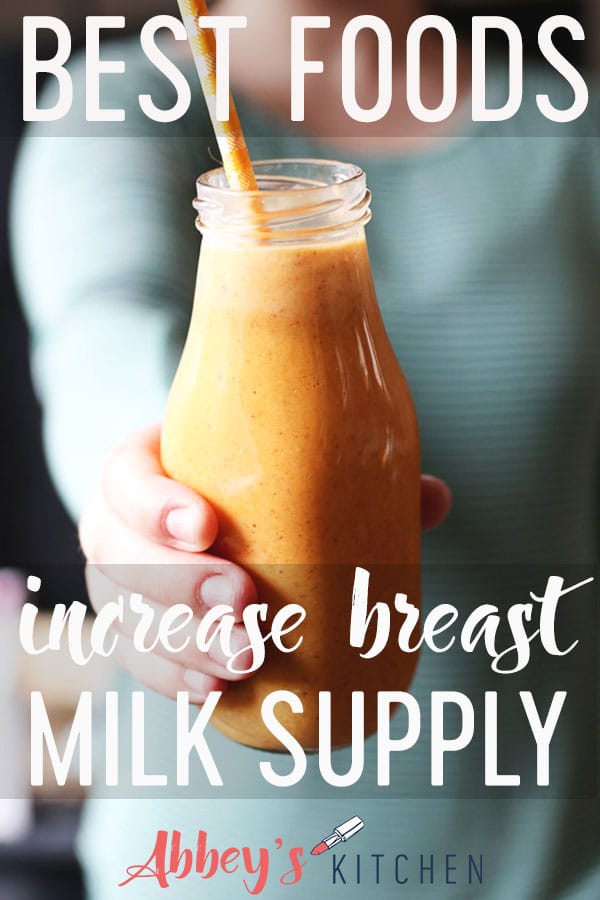
Now we’ve discussed supplements, let’s talk about foods. While there isn’t a ton of great research on how to increase breast milk supply with foods, I don’t generally see a lot of harm in trying them anyway. For the most part, these foods are nutrient dense, and breastfeeding mamas need lots of nutrition and calories, anyway. I’ve packed some of these foods into my lactation cookies and smoothies, both of which are super nutritious for a nursing mom.
Oats
A lot of women claim that eating a bowl of oatmeal daily or incorporating more oats into their diet has led to an increase in their breast milk supply. There is no known mechanism for why this may work, but oats are high in iron and may help in combatting anemia or low iron stores which do cause a decrease in milk supply.
Garlic
Garlic has an intense smell! That odour is transferred through breast milk and can increase the amount of time your baby spends suckling, and may improve food choices and decrease pickiness as your babe gets older. The garlic breath is totally WORTH IT!
Barley/Barley Malt
Barley is a type of starch, and animal studies have indicated that consuming it may increase prolactin in the blood. Despite this, no research on humans has shown the efficacy of eating barley, and so there is no recommended dose or data collected on potential side effects. It is safe to be consumed while breastfeeding, except of course for individual’s with celiac disease.
Barley Malt on the other hand, is found in beer. While beer may have a modestly positive effect on prolactin levels during nursing (related to the barley), and alcohol in general may help you relax enough for better let down, too many alcoholic drinks can actually decrease milk production. You can read more on the relationship between drinking alcohol while breastfeeding here.
Carrots
Some mothers also speak of the benefits of eating carrots thanks to their phytoestrogens. They are also a great source of beta-carotene and Vitamin A which are needed for both mother’s and infants. The beta-carotene can actually be transferred through breast milk, so be careful because an excessive amount can lead to a temporary discolouration of your baby’s skin. Ha, I eat way too many carrots myself and DEFINITELY have noticed orange hands.
Papaya
Cooked, unripe papaya is commonly used as a galactagogue in India and Melanesia. Papaya is rich in Vitamin C and beta-carotenoids that can increase Vitamin A levels in mothers. There is only anecdotal evidence to show papaya influences breast milk supply.
There are tons of other foods that moms report to take to increase their breast milk supply, including apricots, ginger, asparagus, sesame, and eating other whole grains. When I was making low amounts of breast milk, I tried everything that could possibly increase my supply. If you’re wondering how you can incorporate more of these foods into your diet, you can try some of my recipes down below:
Foods and Herbal Supplements that may CAUSE Low Breast Milk Supply
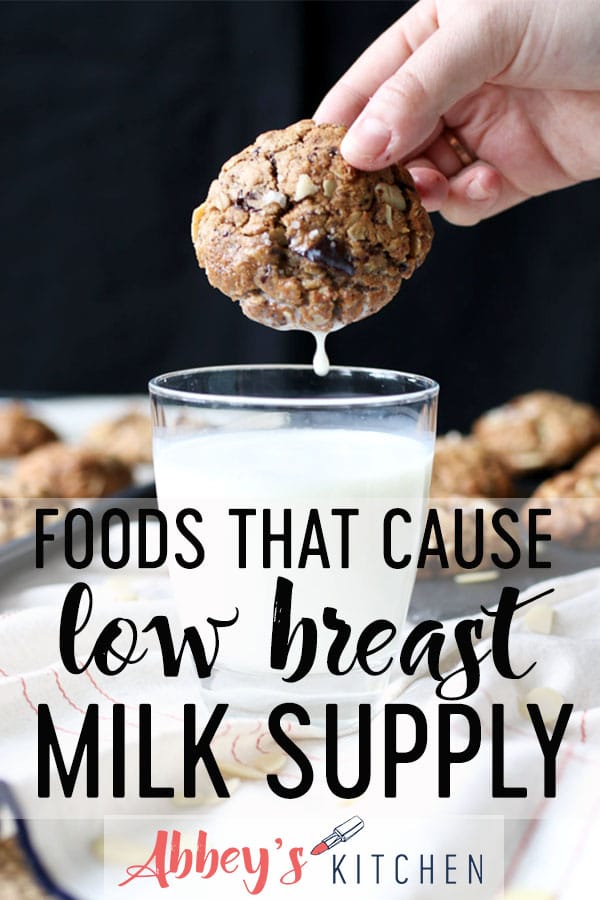
Before you start taking any new herbal supplement or food while breastfeeding (especially if you’re planning to take large amounts), you can use LactMed, a Drugs and Lactation Database. This is a resource with current, summarized information on safety during lactation that I personally have used SO often. Remember, even if it’s “natural,” it can still be harmful to either you or your baby so it’s always best to double check.
Some supplements and foods that have been shown to reduce milk flow, decrease serum prolactin, and decrease overall milk supply are:
- Sage
- Peppermint
- Parsley
- Chasteberry
If you’re trying to increase your breast milk supply, you may want to reduce or avoid these herbs.
Why Eating and Drinking ENOUGH of ANYTHING May be the Key to Breast Milk Supply

Okay, so there may not be a ton of credible research when it comes to a lot of these alleged foods for breast milk but what we do know is that eating and drinking enough of anything is imperative to your supply. Although it can be tempting to try to lose the baby fat quick, this is not an appropriate time! During lactation, women burn around 20 calories per ounce of milk they make, so on average that can amount to an additional 500 calories needed to meet your energy requirements.
You will also need to replace the fluids from breastfeeding by drinking about an extra 700 mL per day. Fluid estimations may be around 12.5 cups (3 L) per day! That may seem like a lot, but remember that fluids can also include tea, soup, and milk. And I don’t know about you, but I am CHRONICALLY thirsty. If you’re finding this difficult, try to remember to have a glass of water every time your baby is feeding or you’re pumping.
Medications to Increase Breast Milk Supply
Sometimes there is only so much you can do on your own. If you do need the extra help, talk to your doctor and they may suggest a medication. Domperidone (MotiliumTM) and Metoclopramide (ReglanTM or MaxeranTM) are two of the most commonly used pharmaceutical galactagogues. Domperidone is typically used for gastrointestinal disorders, but it also increases breast milk supply indirectly by interfering with dopamine receptors that decrease prolactin production. Metoclopramide also has been found to increase milk production. However, it does have some strong side effects such as fatigue, irritability, and severe anxiety and depression. Domperidone has fewer reported side effects, but you may still experience headaches, abdominal cramps, dry mouth, or a change to your menstrual cycle. There was also a Health Canada warning in 2012 to advise against prescribing Domperidone to breastfeeding mothers due to potential implications for heart health. While these medications are not the first line of treatment, and are ABSOLUTELY not for everyone, they may be something to consider if you have your heart on exclusively breastfeeding or pumping. I myself know that I never could have increased my breast milk supply enough to get the 75 L of frozen breast milk I now have without the help of Domperidone.
Bottom Line on How to Increase Breast Milk Supply
I get the struggle of feeling like you are not making enough milk, and that there is a LOT going on that makes breastfeeding so overwhelming. But if this is something that you want, there are a lot of options you can explore. And when you have had enough of the carrots, and blessed thistle, and the power pumping, just know that mama, you’ve done MORE than enough. A happy healthy mom is WAY more important than a breastfed baby. Fed is absolutely best.
More Blog Posts You Might Like
If you’re a breastfeeding mama, you might find these blogs helpful too!
- The Truth About Drinking Alcohol While Breastfeeding
- Keto While Breastfeeding | Is it safe? How does it affect breast milk?
- Things To Avoid While Breastfeeding and Pregnant
- The Ultimate Breastfeeding and Pumping Essentials Guide
Now I want to hear from you! What strategies did you find helpful to increase breast milk supply? Share your tips below!
Contribution by RD2B Elinor Fridman
Updated on November 2nd, 2023

Abbey Sharp is a Registered Dietitian (RD), regulated by the Ontario College of Dietitians. She is a mom, YouTuber, Blogger, award winning cookbook author, media coach specializing in food and nutrition influencers, and a frequent contributor to national publications like Healthline and on national broadcast TV shows.
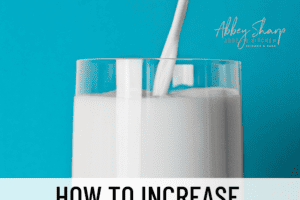
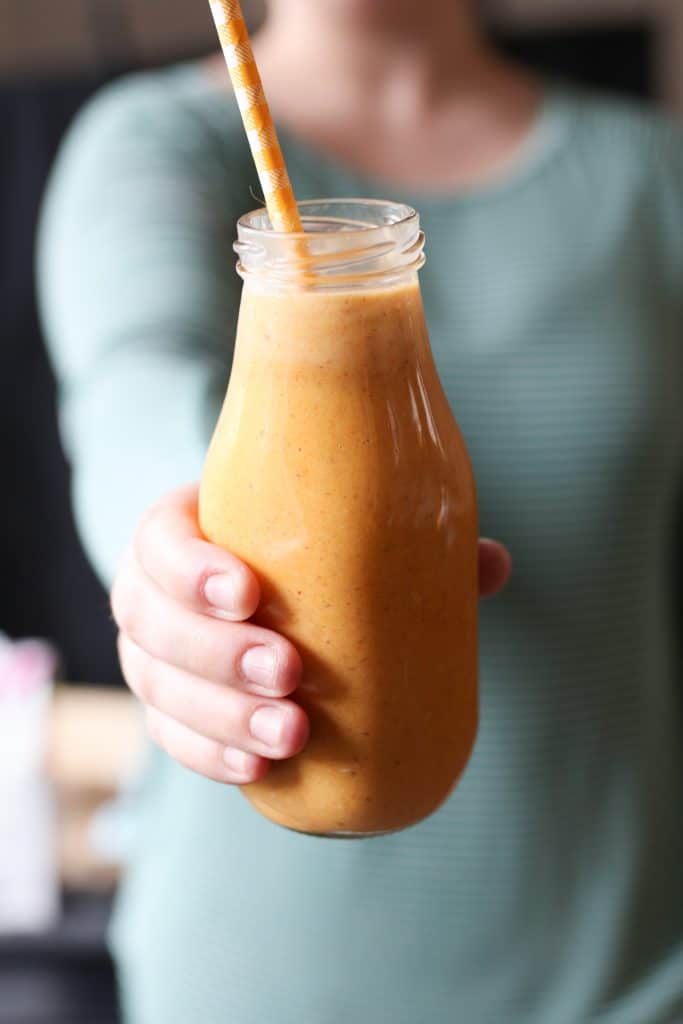
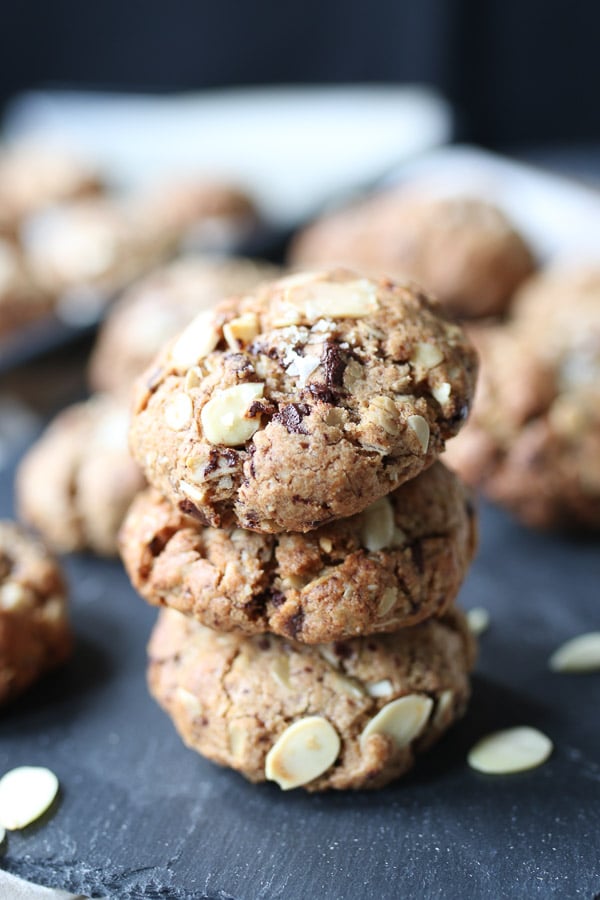

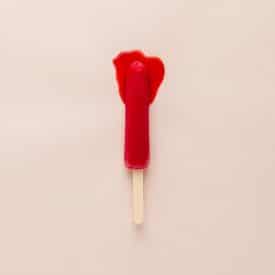

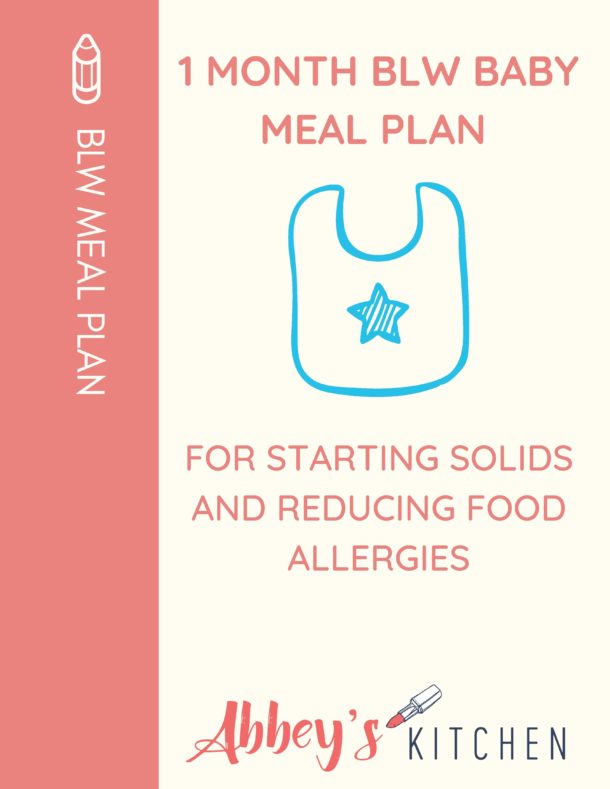
Telkom University says
What role do specific foods and supplements play in enhancing breast milk supply, as advised by a dietitian who specializes in maternal nutrition?
Jo says
Thanks for breaking down everything that was on my mind into one useful article!
Jhoei says
These are great suggestions for women who are planning to breastfeed their babies. Breast milk is still best for babies so your suggestions are really useful to increase milk production.
Abbey Sharp says
thanks for sharing!
Emily @Sinful Nutrition says
What great tips! Never thought of using a lot of these.
Natalie says
These are really great tips Abbey. I have few friends who are struggling with breastfeeding. I will definitely point them to your post.
Deborah Brooks says
I have had many friends who have struggled with nursing. Thanks for sharing your well researched advice
Abbey Sharp says
Thanks Deborah